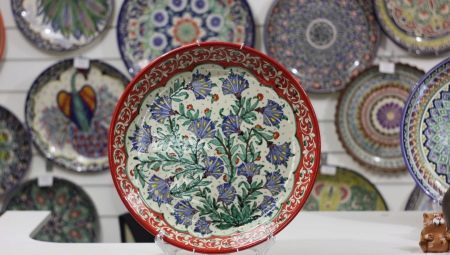Lovers of oriental cuisine, of course, know what a creeper is and what it is intended for. If it is important to feel not only the taste of Central Asian dishes, but also to plunge into the national flavor, then you need an oriental-style table setting that cannot be imagined without a large dish standing in the center of the dastarkhan with pilaf or manti. By what criteria to choose a creeper, what varieties they have, how to care for such dishes - we will tell in our article.
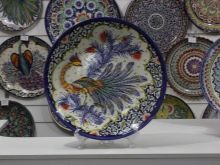

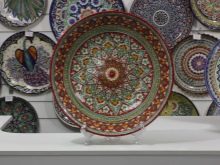
What it is?
Lyagan is a large dish or a large plate intended for serving national dishes in the countries of Central Asia (Uzbekistan, Tajikistan). With such dishes, they collect the main dish into their plates, and if it is pilaf, then it is eaten directly from the creeper, using a cutlery or a pinch of fingers. Lyagans are used, as a rule, when serving a festive table, but they can also be seen in everyday feasts when a large family gathers.
On such a dish you can lay out a slide not only the delicious Uzbek pilaf, but also portioned tortillas (tortillas in Central Asia are usually broken, not cut).
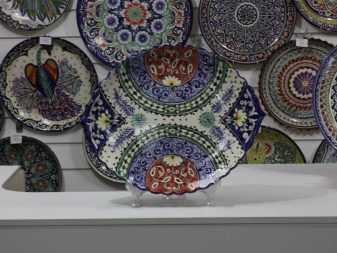
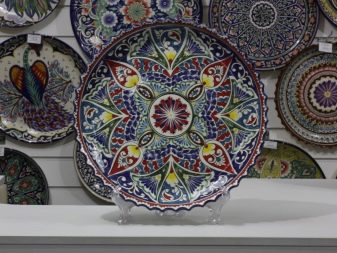
A traditional spherical lyagan, it does not have a large depression, as it is intended for main dishes, without liquid or with a small amount of it.
Some species can be completely flat, completely without sides or with low sides 1-1.5 cm, located at different angles. The material from which real lagans are made is burnt clay, ceramics. Local craftsmen cover the surface of this dish with special glaze several times and decorate it with oriental patterns, which can carry special meaning if they are intended as a gift for any event, for example, for a wedding.
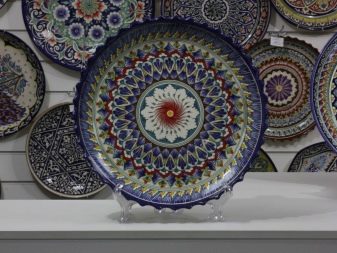
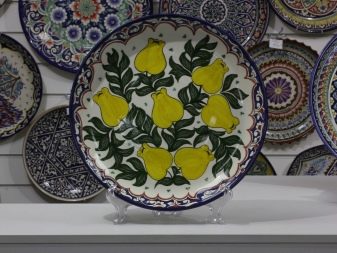
Varieties
Lyagan in the East serves as a symbol of hospitality and friendly feasts, because for one person it is most likely not required. This dish is intended for communication of dear guests at the reception of delicious food. Oriental people have a special relationship with dishes - the richer it is, the more branded the pattern, the more expensive the guest is for the hosts. And of course, a hand-made creeper is valued far above utensils made in the factory.
Varieties of lagans differ in size and painting. The most popular average sizes are from 30 cm. The most tiny lagan is intended for sweets, dried fruits and sweets. A dish up to 42 cm in diameter is the optimal size for the eastern dastarkhan.
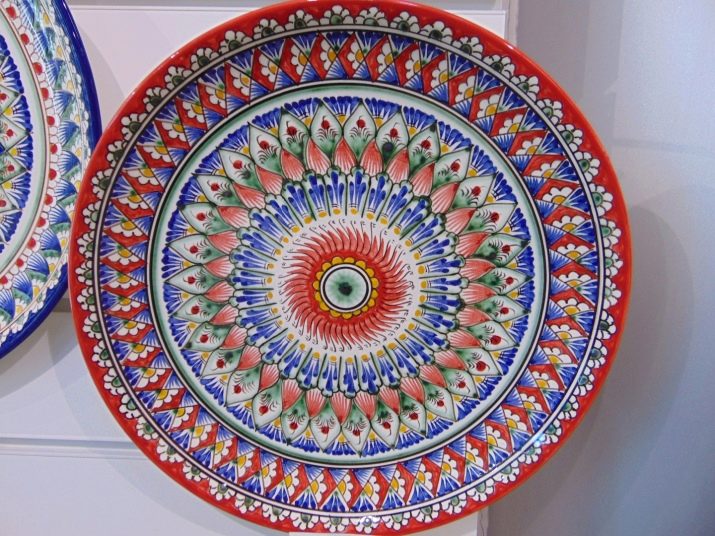
But for the most populous feasts, more lagans are chosen, their diameter can exceed 45 cm or more.
On sale, there are often creepers 55–56 cm in diameter, well, and if an even larger diameter is required, then such creepers are asked to make custom-made craftsmen. Large lagans are sometimes used as a cover for a large cauldron. Lyagans can perfectly decorate the walls of housing and be used for their intended purpose at the same time. To do this, on the reverse side of the wizard create two interconnected holes.
As for the painting, it is very diverse - it is from it that they recognize the place of manufacture of the creeper. Often, patterns decorate not only the front, but also the back surface of the dishes. Choose patterns on dishes with the mind, considering every detail that carries a special meaning. Traditionally, you can find sets of dishes decorated with white cotton flowers on a dark blue or black glaze background - this pattern is called “buttermilk” (buttermilk - translated as “cotton”).
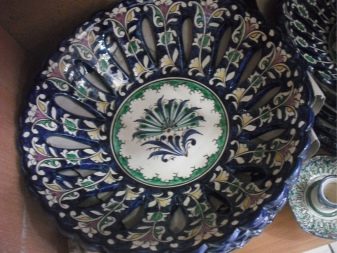
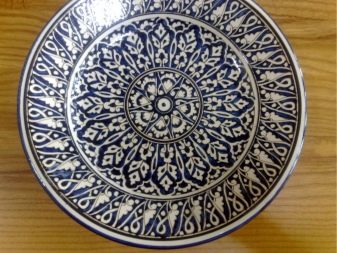
It is no secret that cotton in Central Asia is a significant agricultural crop symbolizing hard work and prosperity. In addition to buttermilk, on the eastern lagans you can observe the following paintings:
- closed circles with various additional ornaments - a symbol of the cyclicity and continuity of all living things;
- geometric shapes - triangles, circles, arches, semi-arches;
- plant ornaments of various colors, pomegranate flowers, almond fruits;
- images of fish and birds - symbols of freedom, peace, purity and wealth;
- knives - protect from evil eye and evil;
- simple but sacred things - sun and sky, seeds and water, plow and harrow.
Masters who have gained the storehouse of knowledge of many centuries can encrypt with a painting on a lyagan the whole life of a person - his birth, marriage, the birth of his children, grandchildren, great-grandchildren, and, of course, death.

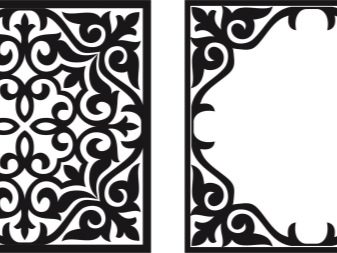
They try to keep such a creeper in the house as a relic. And also on creepers intended as a gift, craftsmen encrypt entire messages-wishes.
Manufacturers Overview
On the territory of modern Tajikistan and Uzbekistan there are many provinces known for their porcelain. Among them are ancient Samarkand and Bukhara, the Uzbek capital of Tashkent, the cities of the Ferghana Valley, Khujand and Kanibadam, Shakhrisabz and Andijan, Gijduvan and Khorezm. Ceramics from Rishtan. This area is deservedly called the "most important pottery workshop throughout Central Asia."
By nature itself, Rishtan was granted the opportunity to become such a center of ceramics: rich deposits of local red clay do not require pretreatment and the addition of impurities. There is no shortage of natural dyes - quartz, manganese, special plants. There were times when the entire male population of Rishtan was engaged in pottery, and the experience gained by local craftsmen was unique.


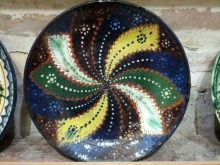
Ornaments from Rishtan are elegant and thin, the lines are smooth, but clearly outlined.
Little is known that the famous Russian blue-white Gzhel painting actually takes its roots from Rishtan ceramics. Yes, our Russian masters adopted in their own way these bewitching blue and white patterns, replacing oriental motifs with Russian colors.But not only such a sky-blue palette can be Rishtan painting - here yellow, red, green multicolors are added to the patterns, and sometimes monochrome products are also found.
Porcelain from Khorezm is famous for its horizontal pattern along the edge of the creeper and the same white-blue color scheme that comes to us from the Eastern Middle Ages. Khorezm dishes are thin to the touch, have sides located almost at right angles. Lyagans from Bukhara and Gijduvan can even hypnotize with their paintings.
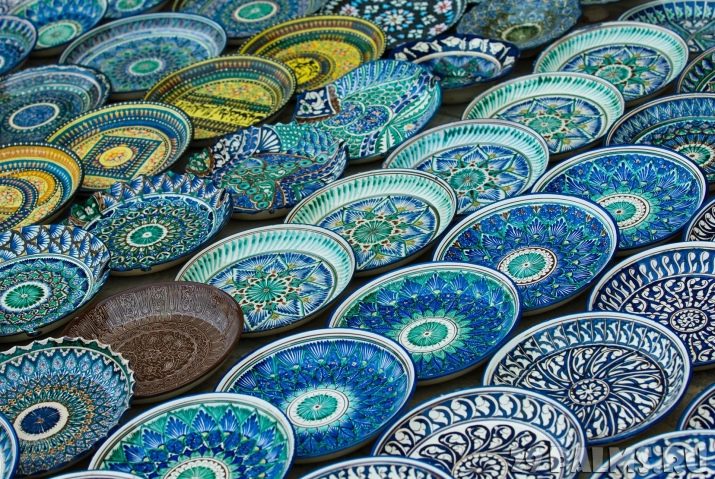
The thing is that the patterns on the dish have the 3D optical effect - the ornament takes on three-dimensional forms if the lag is removed from the eyes and the dish is brought closer to them.
Gijduvan products, despite their thickness, are light in weight and porous. This feature leaves products for a long time at their original temperature - cold or hot.
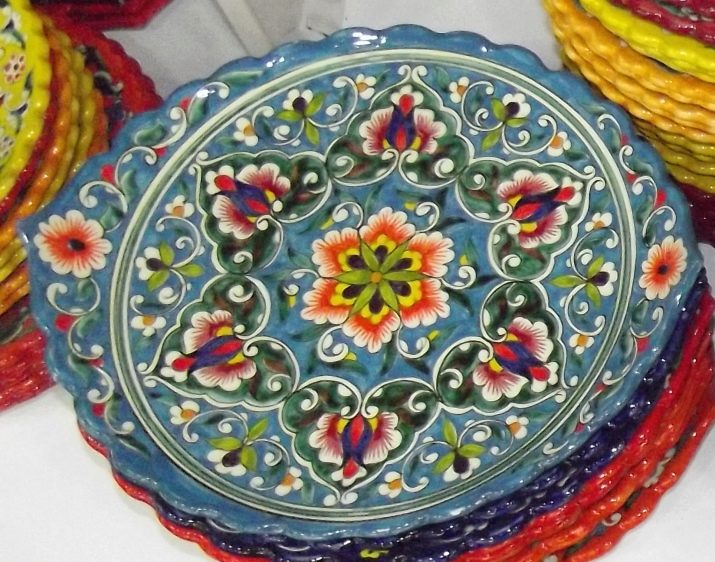
How to choose?
Handmade lagans are valued much higher than industrial cookware. To purchase a high-quality handmade frog, you should pay attention to the following nuances:
- the quality surface of the kitchen utensils should be smooth, without bubbles; subsequently, a chip may form at the site of the bubble;
- turning over a creeper on the bottom surface, you can find circular irregularities formed from the potter's wheel; on a factory product, the back surface at the bottom will be smooth;
- at the bottom of a lyagan and other utensils, the master who created them usually puts the author’s signature, especially if such a craftsman has already achieved fame and recognition;
- factory products will have perfectly even edges, if they are stacked into each other, they are perfectly combined; and two hand-made products cannot be the same - their edges are unlikely to fit together, and the pattern cannot be exactly repeated twice;
- the dishes should emit a light, pleasant ringing with a slight click on it; this ringing resembles the ringing of metal, not clay, the higher and finer its sound, the better the object.
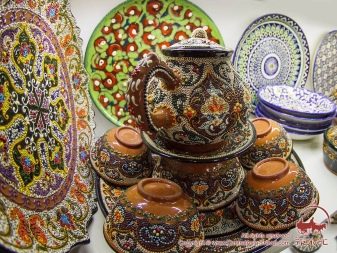
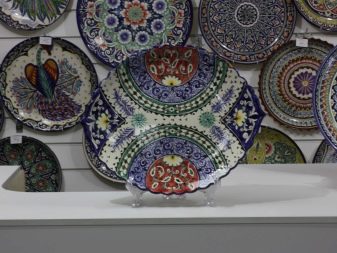
Important! If you split a crib or other type of dishes made by hand, in the ceramics you can find small voids. They were formed during the burning of clay, in which there were various straws or feathers of birds. These voids are proof hand made and are created especially for the lightness of dishes, as well as reducing thermal conductivity as a thermos.
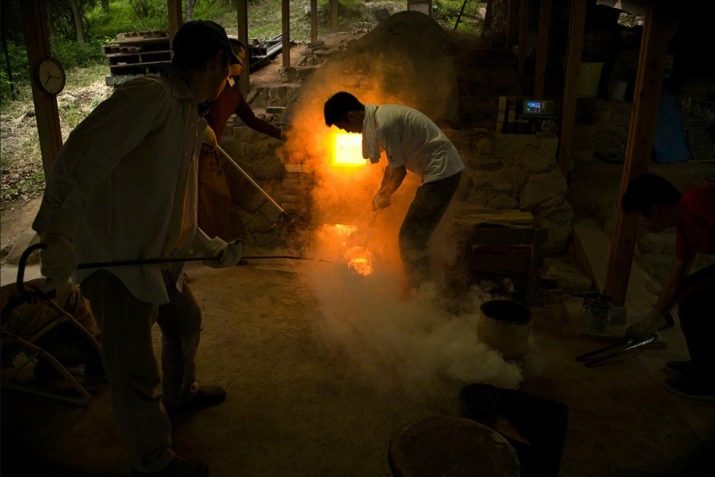
Care Features
In order for the lyagan to serve for a long time, it is not necessary to keep it only as a wall decoration, because its true purpose is to collect good guests around you. Then the lagan will give off the heat of the hands of the master who made it. The frequency of careful use of the creeper does not affect its longevity. Glazed ceramics are not whimsical to care for, but hand-made dishes also require manual handling.
So, products from Uzbek ceramics are undesirable to trust in the dishwasher. It is better to wash it with your own hands under warm water with a special dishwashing liquid.

Then dry with a paper towel and clean until the next arrival of guests on the wall or in the closet.
In a creeper made by a craftsman, like in the rest of ceramic dishes, one peculiarity may appear over time. Products are coated with glaze, which is also produced from natural materials and dyes. Over time, the glaze may become cracked, which is considered the norm for the Uzbek hand made. This kind of wrinkle frog is very much appreciated in traditional families and is passed down from generation to generation.

About what lyagans are, see further.
